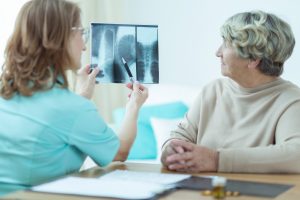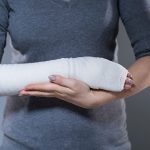 Osteopenia is the decrease in bone density. If you have osteopenia, your bone density may be lower than normal peak level, but it isn’t low enough to be diagnosed as osteoporosis.
Osteopenia is the decrease in bone density. If you have osteopenia, your bone density may be lower than normal peak level, but it isn’t low enough to be diagnosed as osteoporosis.
Bone density is simply the measurement of how strong your bones are. Lower bone density puts you at a higher risk of developing osteoporosis eventually.
Advertisement
Low bone density is often associated with aging. As we grow older, bones become thinner due to the fact that the body reabsorbs bone cells faster than new bone is made. Some medical conditions as well as treatments can also cause osteopenia.
Although osteopenia and osteoporosis both affect the bones, they are not the same. The main difference between the two is that osteopenia is not as severe as osteoporosis. Although there is a higher risk for a bone fracture in someone with osteopenia than in someone without the condition, the risk isn’t nearly as high compared to someone with osteoporosis.
Osteopenia causes and risk factors
As we age, it is natural for our bones to become thinner. This is due to the fact that fewer bone cells are being reabsorbed and new bone is being produced at a slower rate, resulting in a loss of bone mass.
We all reach our peak bone density at the age of 30, so if your bones are quite thick by 30, you will have a lesser risk of developing osteopenia. If your bones are thin at 30, your risk is higher.
In some cases, osteopenia is not a result of bone loss, but rather due to naturally lower bone density. Osteopenia can also be a result of some health conditions or certain medical treatments, such as radiation therapy or chemotherapy for cancer.
Research shows that the following factors can contribute to osteopenia:
- Eating disorders or metabolism problems
- Chemotherapy or other medications
- Family history of osteoporosis
- Thin body frame
- Sedentary lifestyle
- Smoking
- Regular cola consumption
- Excessive alcohol intake
- Pre-existent low bone density
- Exposure to radiation
- Caucasian or Asian race
- Genetics
- Hormonal changes, such as a reduction in estrogen –commonly seen after menopause
- Malabsorption due to other conditions
- Chronic inflammation due to medical reasons
Women are at a higher risk of developing osteopenia because they have a lower peak bone density and because bone loss speeds up around the time of menopause.
 Signs and symptoms of osteopenia
Signs and symptoms of osteopenia
Osteopenia is symptomless, meaning, you may not even be aware that you have the condition unless you go for a bone density test or experience a bone fracture. It does not cause pain, so it can go undiagnosed for years.
Diagnosis and tests for osteopenia
Those who are recommended to be tested for bone density and bone loss are women over the age of 65 and men over the age of 70, postmenopausal women, adults who have experienced a bone fracture after the age of 50, adults with a medical condition that can contribute to bone loss or who are taking medications or undergoing treatments that can trigger bone loss, and anyone currently being treated for bone loss.
Osteopenia is best diagnosed using a bone mineral density test. This test uses a dual energy X-ray scan or DXA scan. The DXA scan measures bone density in the hip, wrist, and spine because these are common areas for bone fractures. The DXA scan is also very helpful in predicting future fractures.
The results of a DXA scan come in two forms: a T score and a Z score. The T score compares your bone mineral density with that of a healthy 30-year-old of the same sex. The Z score compares your results with the average person of the same age and gender as you.
T scores are commonly used to diagnose either osteopenia or osteoporosis. A reading between -1.0 and -2.5 indicates osteopenia.
Other tests to confirm diagnosis of low bone mineral density or bone loss include dual energy X-ray absorptiometry (pDXA), quantitative computed tomography (QCT), peripheral QCT (pQCT), and quantitative ultrasound densitometry (QUS).
Advertisement
Not everyone with osteopenia will be prescribed conventional treatment, such as prescription drugs. Osteopenia treatment guidelines are based on the risk of bone fracture for each individual patient.
Some of the factors the doctors will look at when considering treatment include whether a parent of the patient has fractured any bones, whether the patient has had any corticosteroid treatment such as prednisone in the past, and whether the person has other medical conditions like rheumatoid arthritis. The doctor will also ask about smoking and drinking habits. This information is used to calculate the patient’s risk of bone fracture within the next 10 years. Based on the calculation, the doctor will prescribe either medications or lifestyle adjustments.
Lifestyle adjustments are a vital part of treatment for osteopenia. A big part of these lifestyle changes involves osteopenia exercises, such as walking and lifting light weights. It also recommends taking in all the essential nutrients, especially calcium and vitamin D in adequate amounts.
